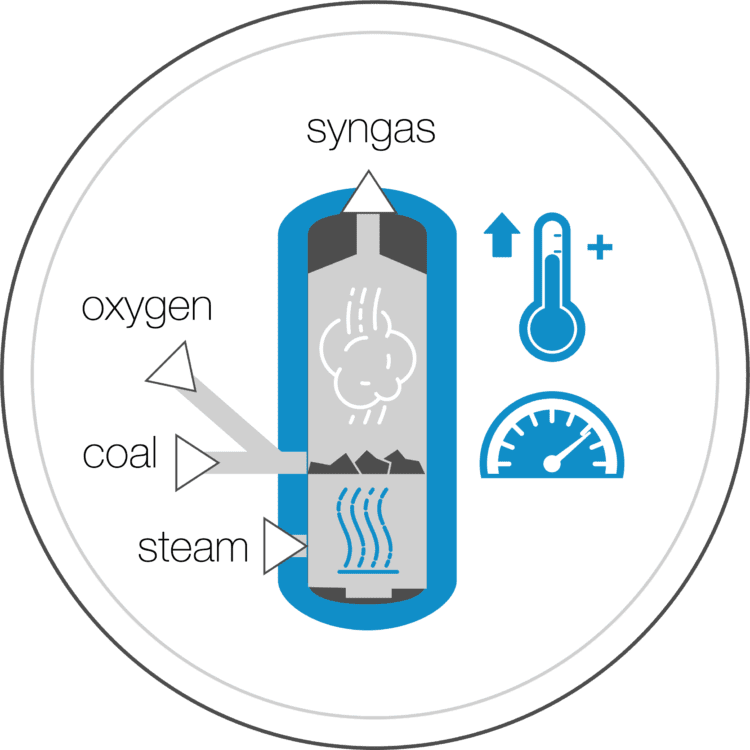Coal-fired power stations, known as thermal power stations, are being phased out in Australia, as they approach their end of life and because their CO2 emissions are not compatible with our net zero commitments.
At the same time, the governments of Japan, Australia and Victoria are backing the Hydrogen Energy Supply Chain (HESC) project which will extract hydrogen from coal and capture and store CO2.
This fact sheet sets out the differences between coal-powered thermal power stations and hydrogen extraction through gasification and explains why CO2 capture is easier and more effective with gasification.
Gasification
Gasification is a chemical conversion process that uses high temperatures (more than 700 degrees Celsius) to break molecular bonds. The process uses a controlled amount of oxygen, not enough to allow combustion, and/or steam to convert organic material (such as coal, timber waste and plantation timber) into synthetic gas (syngas).

The HESC Pilot Project used gasification to extract hydrogen from Latrobe Valley coal. It also successfully extracted hydrogen from a mix of Latrobe Valley coal and biomass (timber waste).
Syngas is primarily a mix of carbon monoxide, hydrogen, and smaller quantities of carbon dioxide and methane.
Post-gasification, syngas is purified through several steps to create pure hydrogen gas (H2), carbon dioxide, and methane.
Gasification and the syngas purification process occur in enclosed vessels, so there is no chance of gases escaping into the atmosphere. The CO2 gas can be transported to permanent storage in an underground carbon storage facility or sold to industries that need CO2 such as the Australian food and beverage industries, who require a large and stable supply of CO2 gas.
The other co-product from coal gasification is a glass-like solid residue that is non-leachable and non-polluting and has several potential uses in construction or civil works.
Gasification is a well-developed technology and core to current integrated coal Gasifier Combined Cycle (IGCC) developments used for power generation in Japan, US, EU, and China.
Latrobe Valley coal is lower in methane and sulphur than other coal sources, while the region’s proximity to the depleted Bass Strait oil and gas fields makes it an ideal location for producing clean hydrogen combined with carbon capture and storage.
Coal-fired thermal power stations
As a comparison, coal-fired power stations burn black or brown coal in a furnace. The heat generated turns water into steam which passes through turbines at high pressure. The steam spins turbines that are connected to an electrical generator to create electricity.
Most coal-fired thermal power stations do not capture CO2 released during the burning of coal, instead releasing it into the atmosphere. According to the International Energy Agency, in 2018 – coal-fired electricity generation accounted for 30% of global CO2 emissions.
Currently, it is not commercially viable for carbon capture retrofits of ageing power station fleets like those in Australia. However, in countries like China with much younger assets, retrofitting carbon capture technology provides plant owners a way to maximise the return on the asset while meeting carbon reduction targets.
Meanwhile, the gasification and gas purification processes proven during the HESC Pilot Project show a commercial-scale HESC project can capture a number of valuable gases, including CO2, without the significant cost of retrofitting. Carbon capture and storage, or re-use, will be an integral part of a commercial-scale HESC Project.